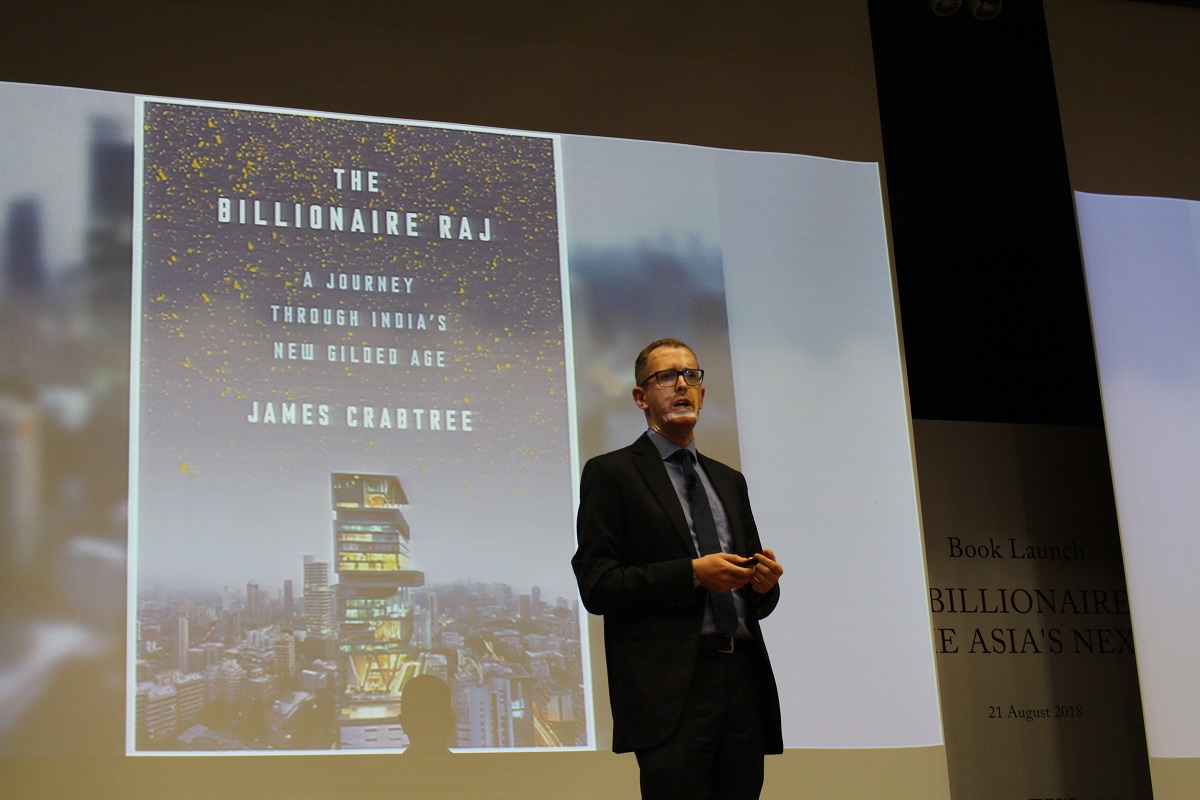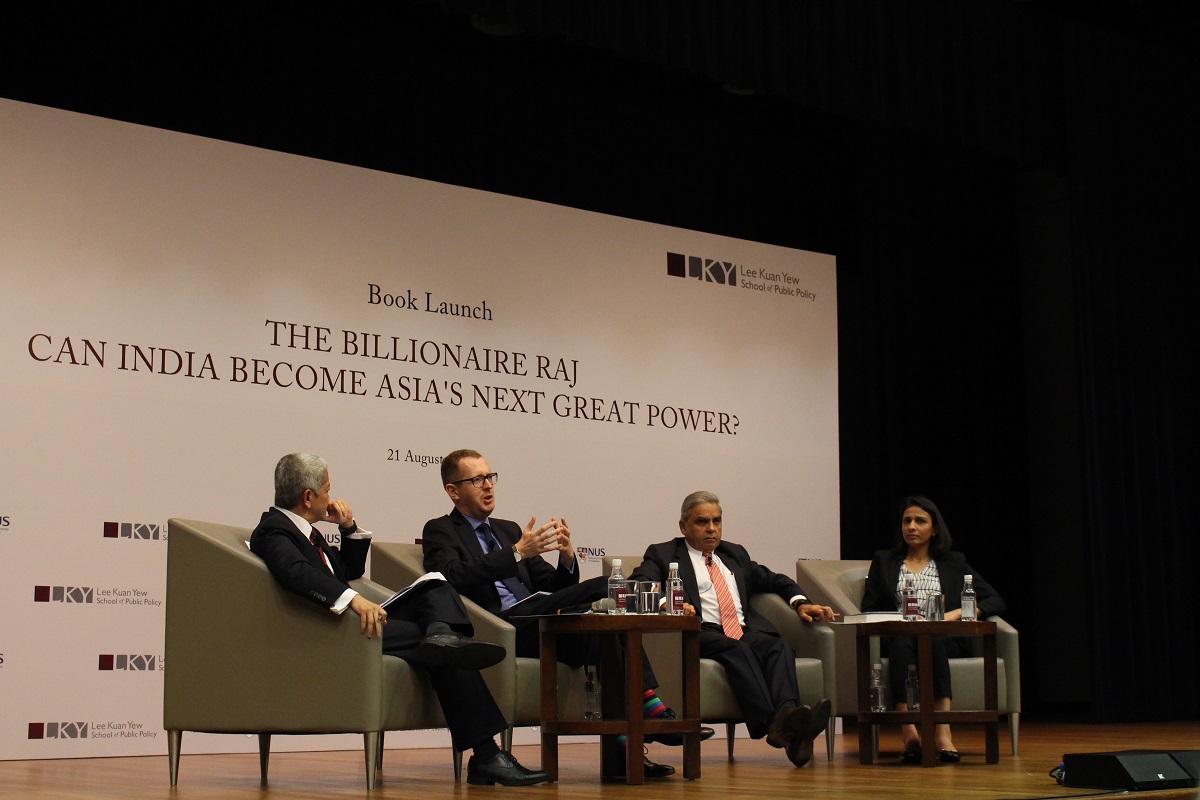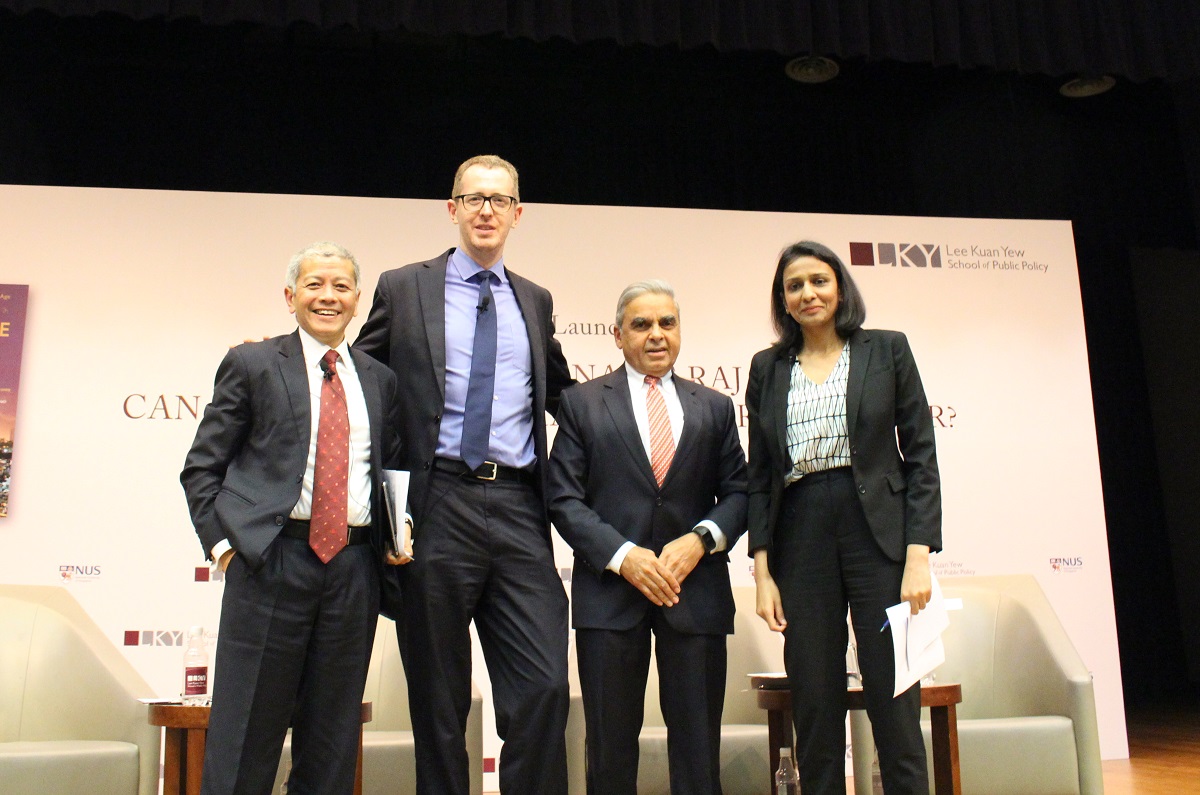
The Lee Kuan Yew School of Public Policy hosted the book launch event for The Billionaire Raj: A Journey Through India's New Gilded Age on Tuesday, August 21, 2018 at the School Auditorium. Authored by James Crabtree, Associate Professor in Practice at the LKY School, the book has received positive critical reviews from The Wall Street Journal, The Economist, The New York Times, The Washington Post, etc. It has also been long-listed for the Financial Times & McKinsey Business Book of the Year Award for 2018.
Professor Crabtree opened the event with a short introduction of his book followed by a discussion and Q&A session with a panel of distinguished experts including Kishore Mahbubani, Senior Advisor (University & Global Relations) and Professor in the Practice of Public Policy at the National University of Singapore, and Sonal Varma, Chief India Economist at Nomura. The session was chaired by Danny Quah, Dean and Li Ka Shing Professor in Economics at the School.
Discussion Highlights

The Importance of India has been underscored by global political trends. It is a worrying sign that many emerging powers today appear to be exhibiting increasingly authoritarian tendencies. China in particular, seems to be sliding backwards into a form of neo-Leninist autocracy. India, with its huge population of 1.3 billion people, is one of the largest and most important democracies in the world. The direction of its development would have an enormous impact not simply on the future of the region, but on the world.
Three Fault Lines were identified as obstacles to India’s continued progress. The first was the rise of India’s new super-rich, and the soaring inequality that came with them. Today, India boasts 119 billionaires, more than any country except China and the US. While this new wealth lifted hundreds of millions from poverty, it also produced dramatic inequality, with the top 10% of income earners now taking home 55% of national income. The second was crony capitalism which was highlighted by the spate of scandals that led up to Modi’s election in 2014, and more broadly, the continuing problem of corruption that is rife in Indian business and politics. The final fault line was a boom and bust economic cycle, which was driven by irresponsible borrowing and investing during the early 2000s. This resulted in large industrial companies and banks becoming heavily indebted and teetering under bad loans.
India’s New Gilded Age is a central theme of the book and an idea that was repeatedly raised during the discussion. It makes the argument that what India is going through today mirrors America’s experience during its own ‘Gilded Age’ in the late 19th century – the period of unprecedented economic growth, but also the emergence of serious problems such as inequality and corruption.

Female Inequality remains a major hurdle for India’s future development. For most countries, female labour force participation tends to increase as families get wealthier. In India however, their participation actually decreases, particularly in the case of lower income families. This is driven by cultural norms that frown upon women in the workforce. If India is able to overcome such social perceptions and increase female participation in the labour market, it will represent an important step in the right direction.
Caste agitation is another challenge that India faces. It arises predominately from frustrations over the lack of employment opportunities for certain castes. But this is actually part of a broader economic problem. India has to create jobs for 1 million Indians entering the workforce every month over the next 20 to 30 years. This problem has been aggravated by India’s poor recent economic performance and Prime Minister Narendra Modi’s failure to generate a significant amount of jobs during his term in office. It is likely that as the economy picks up and India becomes increasingly urbanized, caste issues will become less significant.
China will continue to feature heavily in India’s foreign policy. US-India relations have improved dramatically over the last two decades partly to balance China’s rise. From Washington’s perspective, supporting India’s rise to counter China will ensure that neither can dominate the region. While tensions have continued on and off between the two Asian powers, it is unlikely that China would launch a pre-emptive strike to forcibly halt India’s raise. Rather, both powers would have to find some way to accommodate the other. The real question would be America’s role in this triangular relationship.
India’s future was viewed with optimism by the panel. For the last 2,000 years, India and China have always been the two largest economies in world and it was only in the last 200 years that they have been superseded by the West. Today, we are seeing a grand return of Asia being powered the re-emergence of India and China. Ethnic Indians have also been extremely successful overseas. In the US, they have the highest per capita income and are the leaders of two of the five largest corporations in the world. Moreover, India is now led by a dedicated and disciplined leader in Narendra Modi who is committed to transforming his country.
Certainly, the question remains over how exactly India will address its many existing problems. If it continues down its current path, India will face ever greater challenges to its development and the country is likely to become an unprecedentedly unequal society. But, just as America’s ‘Gilded Age’ eventually gave rise to the ‘Progressive Era’ of social activism and political reform, it is certainly possible for India to go through the same transformation. But this will not happen by accident. For India to escape its new gilded age, it has to begin with solving its three fault lines.
This event was covered by Byron Chong, Research Assistant at the Centre on Asia and Globalisation, Lee Kuan Yew School of Public Policy.
